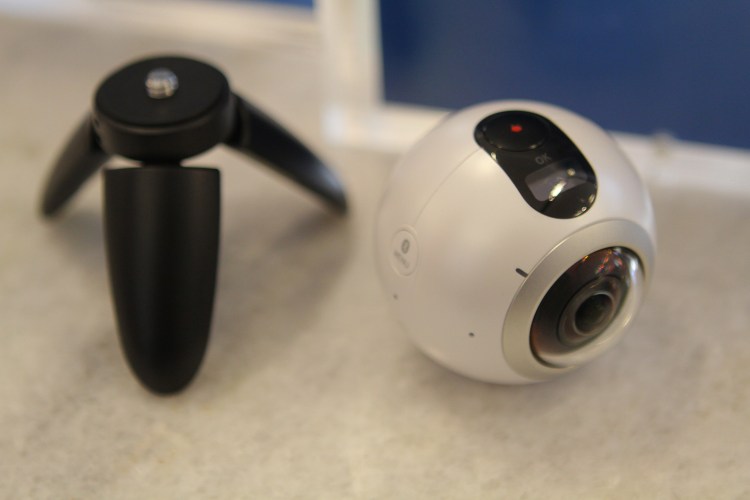Samsung said today it will debut its virtual reality, 360-degree camera on April 29 in select territories, starting in South Korea.
The company made the announcement at the Samsung Developer Conference, which has drawn 4,000 developers and press to the Moscone West convention center in San Francisco. The camera encourages user-generated content for VR, and it complements the Samsung Gear VR mobile viewing device launched last fall.
Samsung said it would launch the Gear 360 in the U.S. at a later date, and it hasn’t yet disclosed the price.
Here’s a description of it by VentureBeat’s Ken Yeung:
The camera comes with two F/2.0 fish-eye lenses that take 195-degree photos and videos, which are then stitched together. It allows photos of up to 30 megapixels and supports “90 percent of 4K” for the whole sphere when capturing video at high resolution (3840×1920). The device holds up to 128GB in a microSD card, meaning that it can shoot up to 7 hours of video at the highest resolution. The 1,350 mAH lithium-ion battery is said to last for up to two hours.
It has a DRIMe5s image processor and a 0.5-inch PMOLED display.
There are four modes on the Gear 360, allowing you to capture still images, time-lapse images, video, and loop. With looping, you can utilize the camera almost like a security or monitoring device. If you’re so inclined, you can also use one of the fish-eye lenses to capture 180-degree views.
Videos are coded in MP4 (H.265) and support MP3, M4A, AAC, and OGG formatted audio. The camera also supports Wi-Fi 802.11 a/b/g/n/ac (2.4/5GHz), Wi-Fi Direct, Bluetooth version 4.1, USB 2.0, and NFC.
The camera is also splash resistant, with an IP53 rating, which Samsung said allows you to use it in the rain, though not when you go swimming. However, the company does plan on providing a bunch of accessories to go with the camera, including an underwater housing.
But Samsung isn’t done with VR yet. Injong Rhee, a Samsung research executive, said the company continues to work on tough mobile VR problems such as weight, dizziness, image quality, insufficient computing power, limited input, and restricted mobility.
“VR is amazing but it is in its infancy,” Rhee said. “It’s not just for professionals. It’s for consumers as well. With our introduction of the Gear 360 camera, we enable more people to create VR content.”


